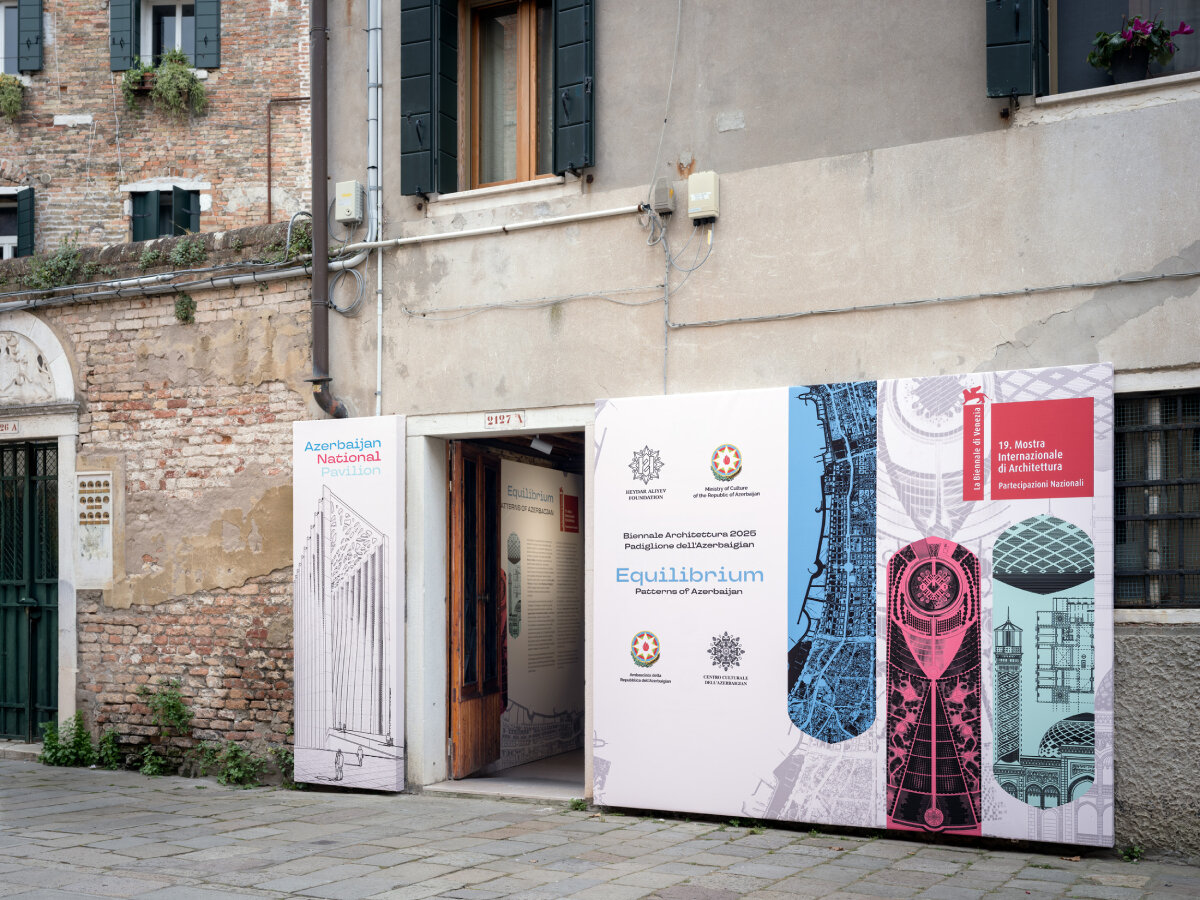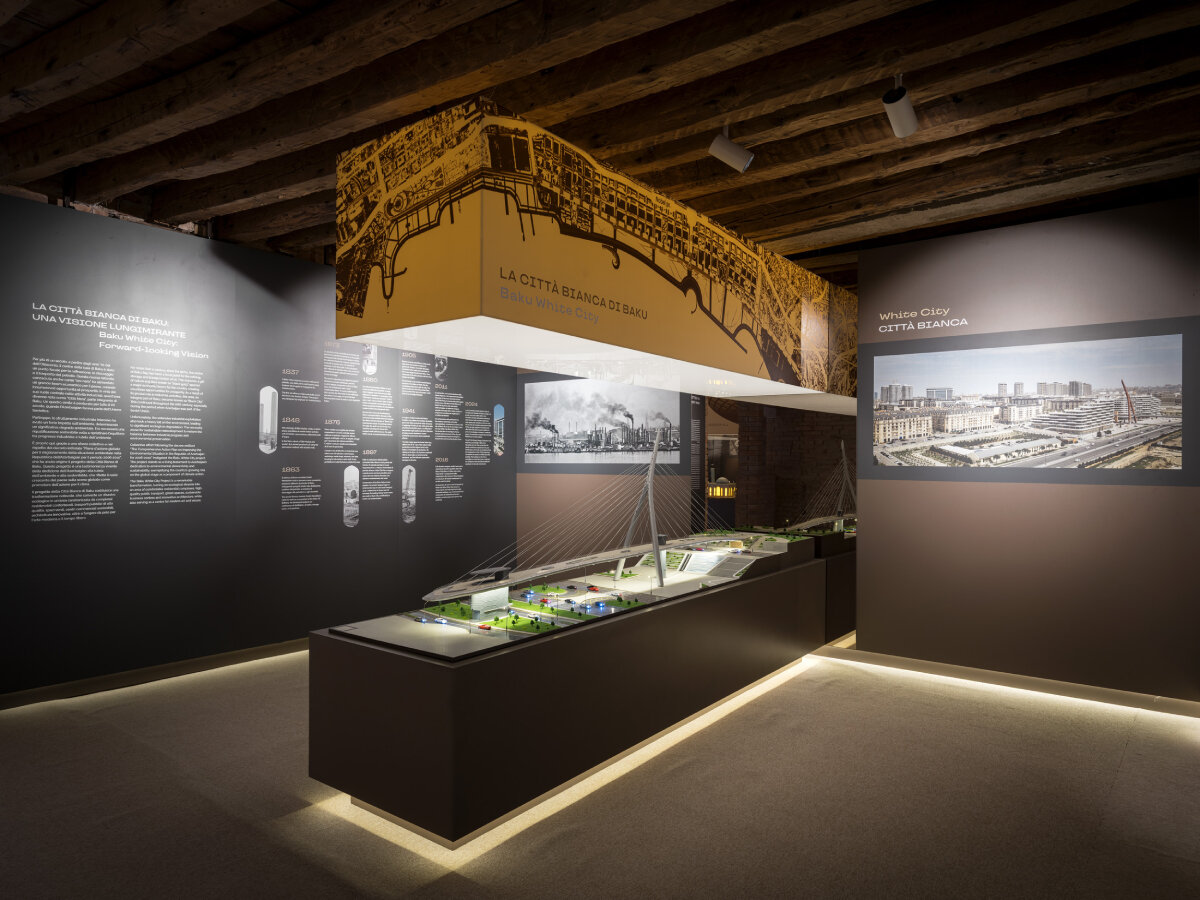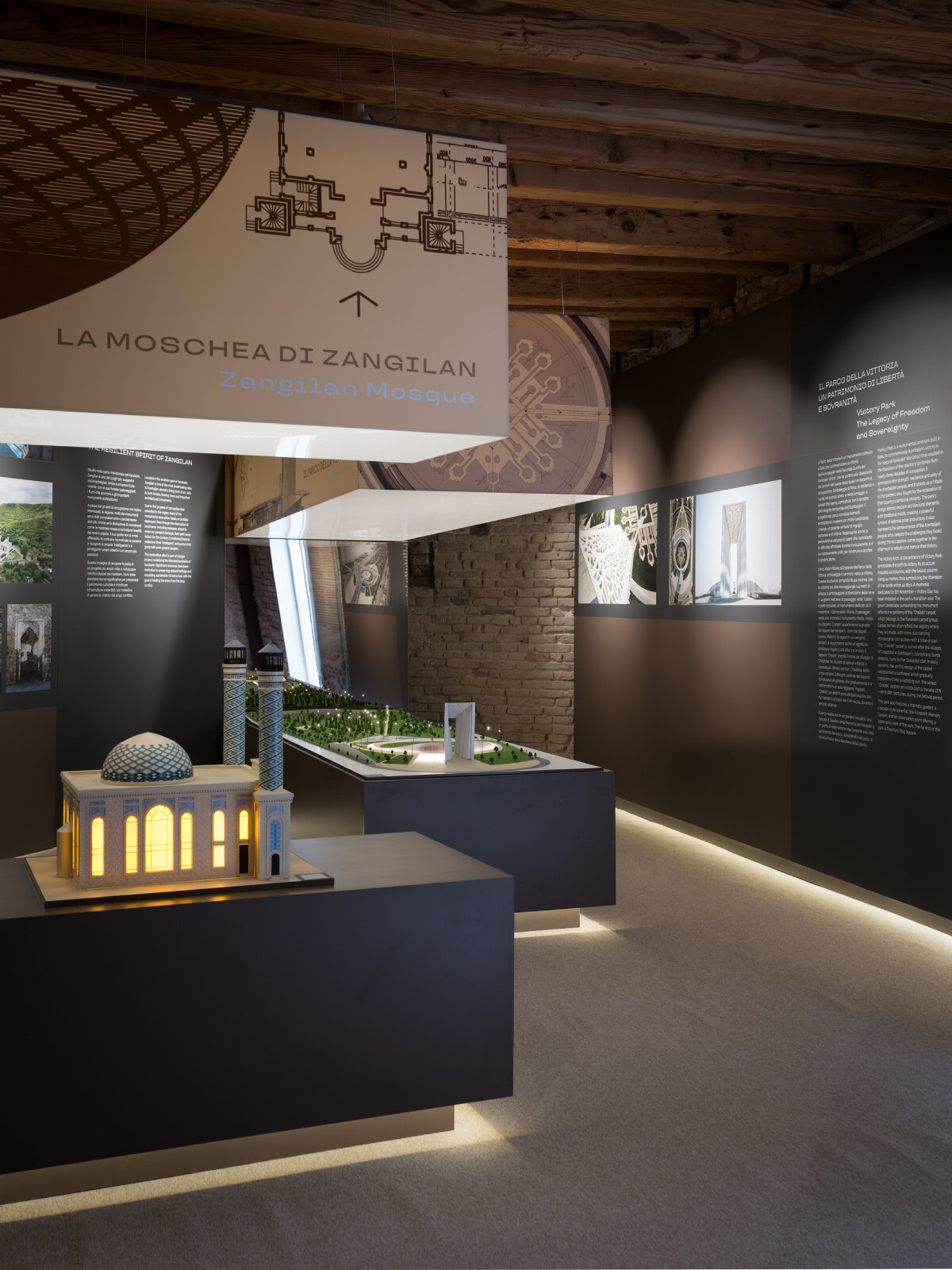republic of azerbaijan’s inaugural pavilion at venice biennale
The Republic of Azerbaijan makes its debut at the 19th edition of the Venice Architecture Biennale with a pavilion proposing a new architectural balance between nature, tradition, and innovation. Curated by Nigar Gardashkhanova, the exhibition titled Equilibrium. Patterns of Azerbaijan is a nuanced exploration of the country’s evolving built environment, bridging its cultural heritage with strategies for environmental and social resilience. This concept is anchored in Carlo Ratti’s broader call for an exploration of his theme, Intelligens: Natural. Artificial. Collective, while articulating its own approach through three key principles: Regenerate, Innovate, Preserve.
These notions of transformation through unity reinforce the team’s core belief in collective intelligence as the driving force behind Azerbaijan’s ongoing efforts to rebuild its cities, protect its natural landscapes, honor its heritage, and bring forth new ideas. In conversation with designboom, curator Nigar Gardashkhanova elaborates that this means recognizing that intelligence lies in not just contemporary tools and technologies, but also in tradition and the action and values of a nation’s communities. ‘It’s also in our shared wisdom,’ she tells us. ‘Every project in the Pavilion shows this: from Baku White City’s transformation to the rebuilding of the Zangilan Mosque, to the design of Victory Park. They are all examples of using knowledge, tradition, and innovation together to create a better future.’ Throughout the exhibition space, three key architectural case studies exemplify these ideas, from heritage monuments to new urban schemes, celebrating Azerbaijan’s rich past in parallel with its journey towards a greener and better connected contemporary landscape.

all images by Ugo Carmeni
Preserving Memory: Zangilan Mosque and the Spirit of Ajami
The themed section, Preserve, focuses on the values of continuity and care, setting the tone by introducing visitors to the richness of Azerbaijan’s history and culture — elements that, as curator Nigar Gardashkhanova notes, must be honored in order to meaningfully shape the future. ‘The Pavilion shows the beauty of Azerbaijan’s traditional architecture, like the Chalabi carpet design, the Zangilan Mosque, and the work of Ajami Nakhchivani,’ she explains.
These ideals converge most clearly in the work of architect Adalat Mammadov and his restoration of the Zangilan Mosque. A master of historical preservation and long-time contributor to Azerbaijan’s religious and civic heritage, Mammadov has led major restorations of some of the country’s most significant spiritual sites, including the Taza Pir Mosque in Baku from the early 1900s, the 8th-century Shamakhi Mosque — one of the oldest in the Caucasus — and the richly ornamented Imamzadeh Complex near Ganja. Across these works, his approach combines archaeological sensitivity with contemporary needs, particularly paying attention to preserving the natural landscape as much as possible, reinforcing the continuity of community life and spiritual expression.

Republic of Azerbaijan makes its debut at the 19th edition of the Venice Architecture Biennale
Regeneration efforts rooted in heritage: Baku White City
While the curation proudly looks to its past, it also challenges traditional narratives of architecture across Azerbaijan by showcasing new ways of building. The Baku White City Project, Azerbaijan’s largest urban redevelopment initiative led by the Azerbaijan Development Company, best exemplifies this ambition and falls under the pavilion’s thematic pillar: Regenerate. Once home to the city’s heavily industrialized Black City, the area was damaged by oil refineries, smokestacks, and widespread environmental degradation, as a byproduct of Azerbaijan’s role as a major oil exporter during the industrial era.
Today, that landscape is being transformed into a modern, mixed-use urban district, planned to host more than 120,000 residential and commercial units, over 240,000 workplaces, as well as cultural venues and public spaces all embedded within a sustainable urban framework prioritizing green infrastructure and community wellbeing.
A symbolic highlight of this regeneration effort is the Baku White City Bridge, exhibited in the Azerbaijan Pavilion as a 3D model. As an important infrastructure, it also holds implications of transition, presenting a physical and metaphorical link between the district’s polluted past and its cleaner, envisioned future.‘The pavilion shows how we can mix old and new — like turning the old Black City into the green, modern White City,’ Nigar Gardashkhanova tells designboom. ‘It tells a story of balance: keeping our traditions while also creating new, better spaces for the future.’

the section themed Preserve focuses on the richness of Azerbaijan’s history and culture
Innovating for a greener, better connected futures: Victory Park
In the pavilion’s Innovate section, the tone shifts from environmental restoration to civic pride, delving into the monuments that continue to define the many layers of the country’s identity. Through models and drawings, studio Simmetrico Architettura presents Victory Park, a public space in the capital city of Baku that commemorates Azerbaijan’s victory in the 2020 Second Karabakh War. The park features elements such as the 44-meter-high Victory Arch symbolizizing a gate or a path to victory. These elements serve as enduring reminders of the nation’s resilience and solidarity in its history. The project also reinforces the recurring message that innovation does not need to reject tradition. Instead, it can serve as a way to honor collective memory and cultural identity, while offering new spatial experiences that speak to contemporary values such as resilience, access, and dignity.
Ahead in the exhibition, a special section of the pavilion also pays homage to Ajami Nakhchivani, the founder of the Nakhchivan School of Architecture, whose geometric mastery and ornamental innovations helped shape medieval architecture across the region. Celebrating his 900th anniversary under UNESCO’s jubilee program, the tribute connects present-day efforts to a deeper architectural lineage, reinforcing the notion that preservation involves extending tradition through living practice.